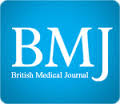 BMJ Open 6:e009586 doi:10.1136/bmjopen-2015-009586
BMJ Open 6:e009586 doi:10.1136/bmjopen-2015-009586
Authors: Andrew Hill, Dzintars Gotham, Joseph Fortunak, Jonathan Meldrum, Isabelle Erbacher, Manuel Martin, Haitham Shoman, Jacob Levi, William G Powderly, Mark Bower.
Objective: To calculate sustainable generic prices for 4 tyrosine kinase inhibitors (TKIs).
Background: TKIs have proven survival benefits in the treatment of several cancers, including chronic myeloid leukaemia, breast, liver, renal and lung cancer. However, current high prices are a barrier to treatment. Mass production of low-cost generic antiretrovirals has led to over 13 million people being on HIV/AIDS treatment worldwide. This analysis estimates target prices for generic TKIs, assuming similar methods of mass production.
Methods: Four TKIs with patent expiry dates in the next 5 years were selected for analysis: imatinib, erlotinib, lapatinib and sorafenib. Chemistry, dosing, published data on per-kilogram pricing for commercial transactions of active pharmaceutical ingredient (API), and quotes from manufacturers were used to estimate costs of production. Analysis included costs of excipients, formulation, packaging, shipping and a 50% profit margin. Target prices were compared with current prices. Global numbers of patients eligible for treatment with each TKI were estimated.
Results: API costs per kg were $347–$746 for imatinib, $2470 for erlotinib, $4671 for lapatinib, and $3000 for sorafenib. Basing on annual dose requirements, costs of formulation/packaging and a 50% profit margin, target generic prices per person-year were $128–$216 for imatinib, $240 for erlotinib, $1450 for sorafenib, and $4020 for lapatinib. Over 1 million people would be newly eligible to start treatment with these TKIs annually.
Conclusions: Mass generic production of several TKIs could achieve treatment prices in the range of $128–$4020 per person-year, versus current US prices of $75161–$139 138. Generic TKIs could allow significant savings and scaling-up of treatment globally, for over 1 million eligible patients.
Click here for the full paper.
Available free under a CC-BY license




